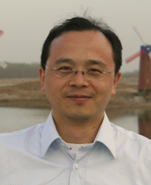Hollow Fiber Membrane
A special issue of Fibers (ISSN 2079-6439).
Deadline for manuscript submissions: closed (31 January 2017) | Viewed by 20371
Special Issue Editors
Interests: polymeric membranes; sustainable membrane preparation; bio-polymeric membranes; flat membranes; hollow-fibers; nano fibers; membrane preparation; membrane characterization; pervaporation; antifouling coatings; self-cleaning membranes; ultra-micro filtration
Special Issues, Collections and Topics in MDPI journals
Special Issue Information
Dear Colleagues,
Membrane technology has been successfully applied in many different industrial fields and in some of them, such as desalination, it can be considered a dominant technology. Membranes are produced using a wide variety of techniques which mainly depend on the membrane material employed and on the applications. Two different configurations, flat and hollow fibers, can be identified and depend mainly on the type of the process and application.
This Special Issue will highlight the importance of the use of hollow fiber membranes and their varied applications. Both original contributions and reviews are welcome related to: (1) preparation of hollow fiber membranes of different materials, such as polymeric, inorganic or mixed matrix membranes; (2) applications using hollow fiber membranes for wastewater treatment, drinking water production, water reuse, removal of toxic metals from water, volatile organic compounds removal from aqueous or gas streams, gas separation, CO2 removal, and production and recovery of high-added value products from wastewater.
Dr. Alberto Figoli
Prof. Dr. Tao He
Guest Editors
Manuscript Submission Information
Manuscripts should be submitted online at www.mdpi.com by registering and logging in to this website. Once you are registered, click here to go to the submission form. Manuscripts can be submitted until the deadline. All submissions that pass pre-check are peer-reviewed. Accepted papers will be published continuously in the journal (as soon as accepted) and will be listed together on the special issue website. Research articles, review articles as well as short communications are invited. For planned papers, a title and short abstract (about 100 words) can be sent to the Editorial Office for announcement on this website.
Submitted manuscripts should not have been published previously, nor be under consideration for publication elsewhere (except conference proceedings papers). All manuscripts are thoroughly refereed through a single-blind peer-review process. A guide for authors and other relevant information for submission of manuscripts is available on the Instructions for Authors page. Fibers is an international peer-reviewed open access monthly journal published by MDPI.
Please visit the Instructions for Authors page before submitting a manuscript. The Article Processing Charge (APC) for publication in this open access journal is 2000 CHF (Swiss Francs). Submitted papers should be well formatted and use good English. Authors may use MDPI's English editing service prior to publication or during author revisions.
Keywords
- hollow fiber membranes
- hollow fiber preparation
- polymeric hollow fiber
- inorganic hollow fiber
- mixed-matrix membrane hollow fiber
- water treatment
- gas separation






